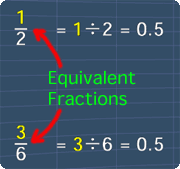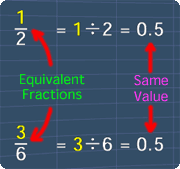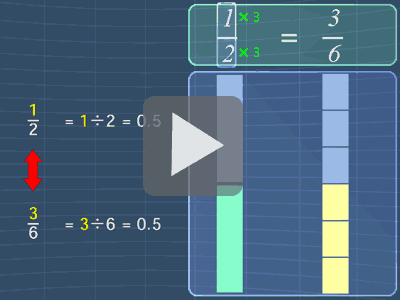
Equivalent Fractions
Lesson Objective
This lesson is
about equivalent
fractions. We
will learn
the important
ideas behind and
how to find
these fractions.
About This Lesson
One of the most important thing we need to know when learning fractions, is to be able to find fractions
that are equivalent.
A good understanding in this will help in solving problems involving fractions that have different denominators.
First, this lesson will cover the basic ideas behind equivalent fractions. Then, we will see how we can find these fractions.
You can proceed by reading the study tips first or watch the math video or try out the practice questions.
A good understanding in this will help in solving problems involving fractions that have different denominators.
First, this lesson will cover the basic ideas behind equivalent fractions. Then, we will see how we can find these fractions.
You can proceed by reading the study tips first or watch the math video or try out the practice questions.

Tip #1
Two fractions are
considered equivalent
when they
have the same
value. This is
shown in
the picture
below:


Tip #2
Now, we can find equivalent
fractions using the following steps:

Using Multiplication

Using Division
The math video below will explain more.
- Multiply/divide the numerator with a number
- Multiply/divide the denominator with the same number

Using Multiplication

Using Division
The math video below will explain more.
Multiple Choice Questions (MCQ)
Now, let's try some MCQ questions to understand
this lesson better.
You can start by going through the series of questions on Equivalent Fractions or pick your choice of question below.
You can start by going through the series of questions on Equivalent Fractions or pick your choice of question below.
- Question 1 on finding fractions that are equivalent.
